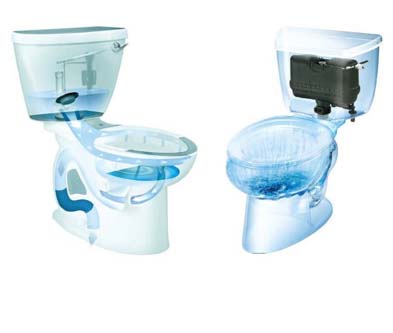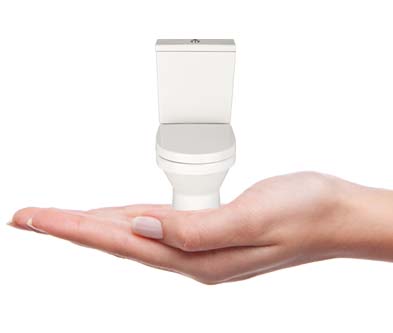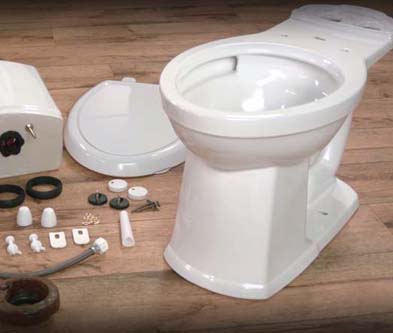Toilet Found! is sustained by readers who made purchases through specific links on this site. Learn more
6 Most Common Home Bathroom Hygiene Myths

Home Bathroom Hygiene Myths Debunked
The bathroom, considered by many to be the epicenter of cleanliness in a home, has its share of myths, especially when it comes to hygiene. Fears of germs and a desire to have the cleanest facilities possible can lead to misconceptions. These myths are perpetuated by a combination of common misconceptions and clever marketing strategies, from toilet seats to hand washing.
Such myths misinform and may influence homeowners to take unnecessary or even counterproductive measures. By debunking these common washroom myths and understanding the hygiene washroom solutions, individuals can maintain a fresher washroom with peace of mind.
1. Myth: Toilet Seats Are the Top Source of Germs in the bathroom
Many believe toilet seats are hot spots for harmful bacteria and contagious germs. However, numerous studies have shown that other areas, like doorknobs and faucets, often harbor more germs than the average toilet seat.
In reality, toilet seats are designed to be resistant to bacteria. They are mostly made from materials that prevent bacteria from sticking around. Most of the bacteria found on toilet seats are common skin microbiota that are usually harmless.
On the other hand, doorknobs and faucets are touched more frequently and by more people, making them more likely to host a variety of germs. Moreover, these surfaces are not cleaned as often or as thoroughly as toilet seats, allowing bacteria and viruses to survive longer.
Therefore, while practicing good hygiene in the bathroom is still important, you’re unlikely to catch anything from a toilet seat.
Best Practice:
- Instead of stressing over toilet seats, focus on daily cleaning of high-traffic facilities and surfaces in the bathroom.
- Use trusted cleaning products to disinfect and clean.
- Consider a Deep Cleaning service if you think a more thorough cleaning is needed.
2. Myth: The Toilet Bowl Water is a Breeding Ground for Harmful Bacteria
While toilet water isn’t drinkable, it’s not the harmful germ harbourage many assume. The real growth of bacteria is often in stagnant water areas, like unused sinks or wet sponges.
Although toilet bowls can contain bacteria, they are not the primary breeding ground for such organisms.
Most bacteria thrive in warm, moist environments, often found in places like kitchen sponges or drains. Moreover, the regular flushing of toilets helps to remove any bacteria that may have multiplied, making the toilet bowl a less ideal environment for bacteria growth.
However, it’s still essential to maintain a regular cleaning routine to ensure the toilet bowl remains sanitary. This includes cleaning the handle and seat, which are frequently touched and can harbor bacteria. But overall, the risk of a toilet bowl being a serious source of harmful bacteria is relatively low.
Best Practice: Regular flushing and cleaning the toilet bowl with appropriate cleaning products will limit the environment for bacteria to thrive. Ensure proper ventilation in the bathroom to prevent moisture build-up.
3. Myth: Cell Phones are Safe From the Spread of Germs in the Bathroom
Contrary to popular belief, cell phones are not immune to spreading germs, especially in places like the bathroom. In fact, a study conducted by the London School of Hygiene & Tropical Medicine found that one in six cell phones had traces of fecal matter, including E. coli bacteria.
This is because bathrooms are mainly a hotspot for germs and bacteria due to the humidity and warmth, creating a conducive environment for these microorganisms to thrive. When we use our phones in the bathroom, these germs can easily transfer onto our devices. Once on the phone, these microorganisms can live for days, waiting to be transferred back to our hands, faces, and other surfaces.
Therefore, cleaning your phone regularly and avoiding using it in the bathroom where possible is advisable. Or at least clean it again after using the bathroom to reduce cross-contamination risks.
Best Practice: It’s advisable to keep cell phones out of the bathroom or, if necessary, regularly clean them using safe cleaning solutions to reduce the risk of infection.
4. Myth: Proper Hand Washing Requires Only Water
Dirty hands can be a significant host for germs. Improper hand washing or inadequate hand washing can lead to the spread of common viruses and bacteria.
Proper hand washing requires more than just water.
To effectively clean hands and eliminate harmful germs, soap is crucial. Soap helps lift dirt, oils, and microbes from the skin, which can be rinsed away with water. Moreover, cleaning by scrubbing all parts of the hands thoroughly, including between the fingers and under the nails, is important for at least 20 seconds. This process is essential in preventing the spread of diseases.
Hand sanitizers can also be used when soap and water are unavailable. Still, they should not replace proper hand washing whenever possible. Therefore, maintaining a proper hand hygiene routine is vital for our health and those around us.
Best Practice:
- Use soap and hot water, scrubbing hands for at least 20 seconds.
- Ensure clean hands by drying them with a clean towel or air dryer.
- Avoid antimicrobial soaps, as they can lead to resistance in certain bacteria.
5. Myth: Heated Toilet Seats or Paper Toilet Shields Offer a Protective Layer Against Germs
While heated toilet seats can provide comfort, they don’t necessarily make toilets cleaner. Similarly, paper shields may not offer significant protection against germs.
Toilet seats, especially public ones, are often perceived as a hotbed for harmful bacteria. As a result, many people resort to using heated toilet seats or paper toilet shields to avoid exposure to germs. However, these methods are not foolproof.
Heated toilet seats may make the experience more pleasant, especially in cold environments. Still, they do not have any inherent germ-killing properties. On the other hand, while providing a physical barrier between the user and the toilet seat, paper shields are not impervious to microbes. The thin layer of paper can easily be penetrated by germs, rendering the shield practically ineffective.
For this reason, the best defense against germs on toilet seats is still thorough hand washing with soap and water after using the toilet.
Best Practice: Rather than relying on temporary solutions, focus on regular cleaning and disinfection. Remember, a cold toilet seat isn’t necessarily a host of germ colonies.
6. Myth: Commercial Cleaning Companies are Always Better for Deep Bathroom Cleaning
While commercial cleaning companies can offer expertise, it doesn’t mean your daily or weekly cleaning is inadequate. Often, a well-maintained bathroom doesn’t harbor harmful bacteria more than other parts of a healthy person’s home.
The effectiveness of cleaning depends more on the techniques used, the products, and consistency rather than on who does it. If you’re using the right cleaning agents and tools, regularly cleaning, and paying attention to often neglected areas like under the sink and behind the toilet, you could achieve a deep clean just as well as a commercial company.
Furthermore, a commercial deep cleaning service can be expensive, which may not be necessary if you maintain your bathroom properly. However, commercial cleaning companies can be beneficial for larger spaces or if you’re dealing with a particularly stubborn problem.
Best Practice: Maintain a consistent cleaning schedule using quality cleaning products. If you have to engage a deep cleaning service, ensure they use safe, effective products and have a good service reputation.
In Conclusion…
The key to a hygienic washroom solution is understanding the sources and risks associated with germs and bacteria. You can ensure a clean and safe bathroom environment with knowledge and regular maintenance.
Furthermore, ensuring high-quality sanitary products and cleaning supplies is essential to maintaining hygienic conditions. These products are designed to kill harmful bacteria and prevent their growth. And regular cleaning, especially of high-touch areas like faucets, door handles, and toilet seats, is crucial.
Equally important is encouraging good personal hygiene among bathroom users. This includes regular hand washing, hand sanitizers, and proper disposal of waste. Additionally, regular inspections and immediate repairs of any leaks or damages can prevent the growth of molds and bacteria.
By implementing these measures, not only will you have a cleaner, safer washroom, but you will also be promoting the health and well-being of all those who use it.







